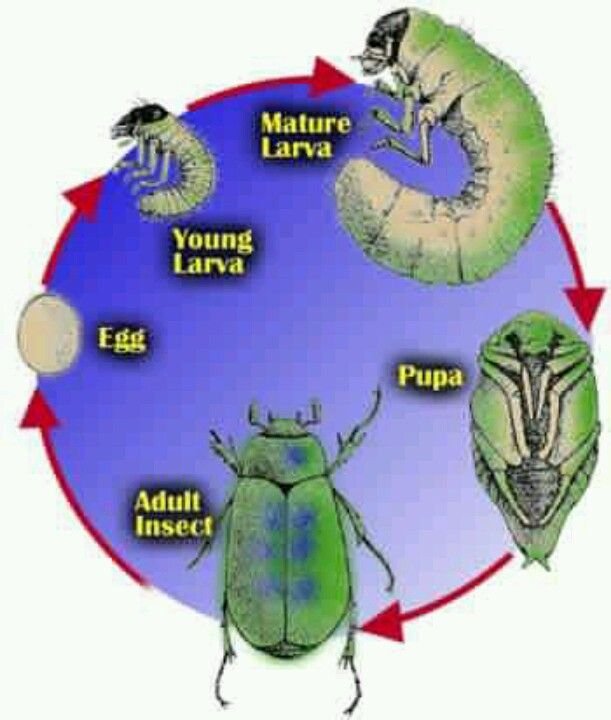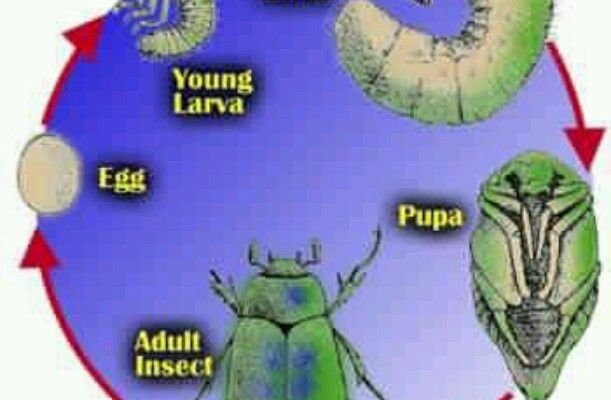
So, let’s grab a cup of coffee and dive into the world of grub worms. Understanding their lifecycle isn’t just about curiosity; it helps us recognize how these little critters can impact our gardens and yards. Knowing what to expect at each stage can empower you to manage their presence effectively, whether you’re passionate about gardening or just trying to understand the bugs around you.
What Are Grub Worms?
Grub worms, often called grubs, are the larvae of various beetles, most commonly the Japanese beetle, June beetle, and fewer types like the masked chafer. Imagine these larvae as the “teenage” stage of beetles, living underground and munching on roots and organic matter. They look like fat, white, C-shaped creatures with soft bodies and a brown head.
These larvae are essential to the ecosystem. They help decompose organic material in the soil, turning it into nutrients that plants thrive on. However, they can also cause problems if their population grows too large, damaging your lawn or garden. You might be curious about how they get from being a tiny egg to a mature beetle that buzzes around your flowers.
The Egg Stage: Tiny Beginnings
The lifecycle of a grub worm starts from an egg. Female beetles typically lay around 20 to 60 eggs in the soil during late spring to early summer. These eggs are about the size of a pinhead and are white or cream-colored. They are often laid in clusters, where they can benefit from the warm, moist soil.
Within a few weeks, the eggs hatch into larvae. This stage is quite vulnerable, as the tiny grubs are exposed to various predators like birds and parasitic insects. They’re not just laying there, though; they’re preparing for their future by turning into little eating machines!
As the eggs hatch, you might wonder how they manage to survive in such a competitive environment. Here’s the thing—grubs have a built-in defense mechanism: their tough outer shell and the soft, mineral-rich soil provide a cozy nursery until they’re ready to dig deeper into the earth.
The Larval Stage: Growing and Eating
Once the eggs hatch, the grubs enter the larval stage, which can last from a few weeks to several months, depending on the species and environmental conditions. During this time, these little guys eat a lot! Their primary diet consists of decaying organic matter, grass roots, and plant material, which can sometimes lead to trouble in your garden.
As they feed, grubs grow and molt several times, shedding their skin to accommodate their increasing size. An interesting fact is that they can reach lengths of up to 2 inches before pupating. That’s quite a transformation from that tiny egg!
Honestly, you might be wondering how to identify if you have grubs in your soil. A few signs include patches of brown grass or areas that feel spongy when you walk on them. If you dig a bit, you might find these plump wrigglers munching away just below the surface.
The Pupation Stage: The Big Change
After several weeks or months of feasting and growing, it’s time for the grubs to enter the pupation stage. This period is crucial; it’s where the magic happens. The grub burrows deeper into the soil to find a safe space for transformation. They can dig down a foot or more, depending on the species and climate.
Inside their cozy underground chamber, grubs undergo metamorphosis. This involves a complete reorganization of their bodies, breaking down their larval structures and forming new adult features. It’s almost like they’re enjoying a long snooze, dreaming about what they’ll become.
This stage can last anywhere from a few weeks to several months, influenced by weather conditions. Warmer temperatures speed up the process, while colder conditions can delay it. It’s like nature’s version of a “power nap” that prepares them for their new life as beetles.
The Adult Beetle Stage: The Final Transformation
Finally, after all that waiting, it’s time for the grubs to emerge as adult beetles. This is where they really show off their new form, with hard exoskeletons and impressive wings. Depending on the species, the beetles might have vibrant colors, like the shiny green of the Japanese beetle or the plain brown of the June beetle.
Once they break free, these beetles start their new life above ground, ready to mate and lay eggs of their own, beginning the lifecycle all over again. Adult beetles feed on leaves, flowers, and fruits, which can be a nuisance for gardeners. It’s a cycle of life that illustrates the connection between different stages and how they interact with the ecosystem.
Understanding this transformation from grub to beetle is key. Recognizing that these beetles are just the adult form of those harmless-looking grubs can help you manage their populations effectively, ensuring your garden remains healthy and thriving.
How to Manage Grub Worms in Your Garden
If you’re dealing with grubs in your garden, there are several ways to manage them. Here are some strategies you might consider:
- Natural Predators: Encourage birds and beneficial insects that feed on grubs. These can help keep their numbers in check.
- Beneficial Nematodes: These microscopic creatures prey on grubs. Introducing them to your soil can significantly reduce the grub population.
- Organic Treatments: Products containing milky spore or diatomaceous earth can be effective in controlling grubs without harming the environment.
- Regular Lawn Care: Healthy lawns are less susceptible to grub damage. Regularly aerating, watering, and fertilizing your lawn can help.
It’s crucial to understand that prevention and management go hand in hand. Keeping an eye on your soil health and being vigilant about monitoring grub populations can save you a lot of trouble down the line.
Why Understanding the Grub Worm Lifecycle Matters
Understanding the grub worm lifecycle isn’t just for gardeners; it’s valuable for anyone interested in ecology and pest management. Grubs play essential roles in soil health and nutrient cycling, contributing to the larger ecosystem.
Additionally, knowing their lifecycle can help you time your interventions perfectly. For example, applying treatments when grubs are in their larval stage can be much more effective than waiting until they’ve transformed into beetles.
You might be surprised to learn that, while they can be pests, grub worms are part of a natural process that keeps our ecosystems balanced. By recognizing their stages, you can work with nature instead of against it, ensuring a thriving environment for both plants and beneficial insects.
The journey from grub worm to beetle is a captivating transformation that showcases the wonders of nature. By understanding this lifecycle, you equip yourself with the knowledge to manage these creatures effectively in your garden. Whether you’re dealing with a pesky beetle or just curious about these larvae, knowing their stages can help you cultivate a healthy and vibrant environment.
Next time you spot a grub worm, take a moment to appreciate its potential. It’s not just a pest; it’s part of a fascinating lifecycle that connects various aspects of our ecosystem. So, grab that cup of coffee and keep learning about the intricate world of nature—you never know what else you might discover!

